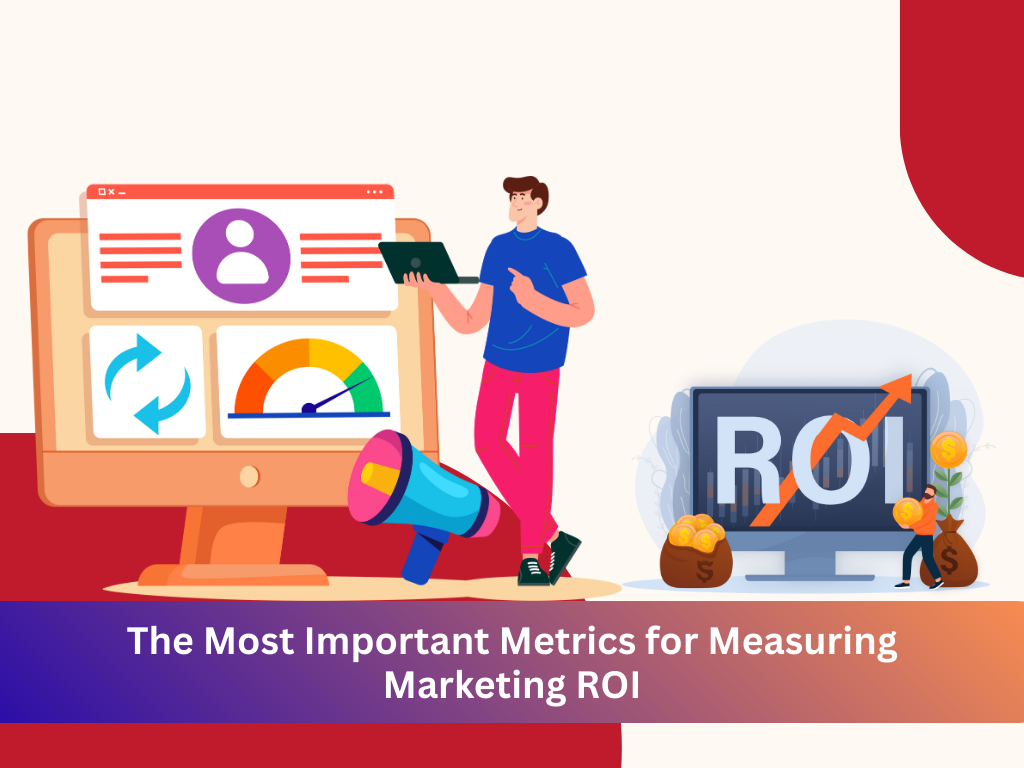
Marketing without measurement is like flying blind. To know what’s working (and what’s not), you need to track the right metrics that tie marketing efforts directly to business results. In this blog, we’ll break down the most important metrics for measuring Marketing ROI, how to calculate them, and why they matter.
Why Marketing ROI Metrics Matter
Without data, decisions are driven by guesswork. Tracking ROI-centric metrics allows you to:
- Justify marketing spend to stakeholders
- Optimize your strategy based on real performance
- Identify high- and low-performing channels
- Forecast growth and budget more accurately
1. Return on Marketing Investment (ROMI)
Formula:
(Gross Profit from Marketing – Marketing Cost) / Marketing Cost x 100
Why it matters: It tells you how much profit your marketing efforts are generating relative to their cost. A positive ROMI means you’re generating more revenue than you’re spending.
2. Customer Acquisition Cost (CAC)
Formula:
Total Marketing Spend / Number of New Customers Acquired
Why it matters: CAC helps you understand how efficiently you’re converting prospects into customers. Lower CAC = more efficient campaigns.
3. Customer Lifetime Value (CLTV)
Formula:
Average Purchase Value x Purchase Frequency x Customer Lifespan
Why it matters: CLTV gives insight into how much revenue a customer is expected to generate during their relationship with your brand. Pair it with CAC to understand profitability.
4. Conversion Rate
Formula:
(Conversions / Total Visitors) x 100
Why it matters: This measures how well your campaigns and landing pages are turning visitors into leads or customers. It’s a key performance metric for both paid and organic channels.
5. Lead-to-Customer Rate
Formula:
(Number of Customers / Number of Leads) x 100
Why it matters: This helps assess the quality of your leads and the effectiveness of your nurturing process.
6. Marketing Qualified Leads (MQLs) and Sales Qualified Leads (SQLs)
Why they matter: MQLs and SQLs indicate how many leads are actually worth pursuing. An increase in SQLs suggests your campaigns are targeting the right audience and nurturing them well.
7. Cost per Lead (CPL)
Formula:
Total Marketing Spend / Number of Leads Generated
Why it matters: CPL helps measure how cost-effective your campaigns are in generating new prospects.
8. Bounce Rate
Why it matters: A high bounce rate means people leave your site without engaging. It could signal poor landing page design, slow load times, or irrelevant messaging.
9. Engagement Metrics (CTR, Time on Page, Social Shares)
- Click-Through Rate (CTR): Measures how compelling your content/ad is.
- Time on Page: Reflects content value and relevance.
- Social Shares & Comments: Indicates audience resonance and brand affinity.
10. Revenue Attribution by Channel
Why it matters: Multi-touch attribution tells you which marketing channels actually drive conversions—whether it’s paid search, email, social, or organic.
11. Net Promoter Score (NPS)
Why it matters: While not directly tied to ROI, NPS measures brand satisfaction and customer loyalty—two strong indicators of future revenue growth.
Marketing success isn’t about vanity metrics—it’s about measurable business outcomes. Tracking the right metrics helps you understand your marketing ROI, make better strategic decisions, and prove the impact of your work.
